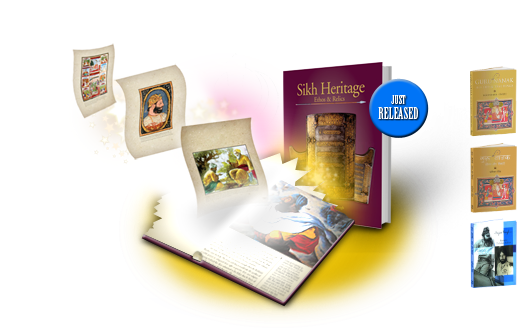Nanak Bani: Interpreted in Free Verse
By Harjeet Singh Gill.
Publication Bureau, Punjabi University, Patiala. Volumes I and II.
Pages 1,251. Rs 650 each.
GURU Nanak’s bani is his living legacy, the very core of the religion he founded. Even as we admire Guru Nanak for eschewing the complicated forms of language and embracing not only the common people but also their idiom, we marvel at the sheer poetry of his expression that transports those who read it or listen to it on transcendental level.
 Over the years, there have been a number of serious attempts to translate the bani of the Gurus. The early work was done by Ernest Trumpp (1828-85), which raised a lot of hackles, whereas M. A. MacAuliffe (1842-1913) got a positive response from the Sikhs.
Over the years, there have been a number of serious attempts to translate the bani of the Gurus. The early work was done by Ernest Trumpp (1828-85), which raised a lot of hackles, whereas M. A. MacAuliffe (1842-1913) got a positive response from the Sikhs.
Many people would be excited to know that now Prof Harjeet Singh Gill has applied himself to the task, especially in reference to Guru Nanak’s bani. A distinguished linguist and former professor and chairman, Centre of Linguistics and English, School of Languages, Jawaharlal Nehru University (JNU), New Delhi, now he is Professor Emeritus at JNU, and has spent the last few years in Patiala.
In the two-volume book on bani, Gill uses the free verse to communicate Guru Nanak’s message. The following is a quotation from Raag Wadhans, Chhant:
The dirt of dirty deeds cannot be washed away
With ritual baths, with superficial ceremonies,
The only true bath is the bath of truth
 Image by Gurumustuk Singh via Flickr
Image by Gurumustuk Singh via Flickr
When the heart vibrates with truth
When the devotee lives in truth
There is purity, there is perception
What Gill writes is clear and lucid and his interpretation of Guru Nanak’s bani introduces modern English-speaking audience to the Guru’s compositions. It marks a welcome break from the ornate compositions written in flowery language that have traditionally been used to translate gurbani. Gill conveys the Guru’s message with simplicity and fluidity and it would, perhaps, be too much to expect this translation to capture the glorious transcendence of gurbani, more so, since he is a scholar of language, not of divinity.
While most of Guru Nanak’s bani used common language, as opposed to the formal Sanskrit, at the same time his vocabulary comprised words from various local dialects and languages, which were used to express complex thoughts and concepts. It is thus imperative to get the meaning of the traditional interpretation, understand it, internalise it and then render it to another language.
Gill’s credentials as a linguist are tremendous. In fact, he is among the tallest scholars in the field internationally. At the same time he is candid in admitting that he has relied on his understanding of the Guru’s bani, rather than traditional research. Sometimes the seeming familiarity leads one astray, thinking of the word ahren as a hammer, rather than as anvil, a common mistake that is also repeated in the book.
Gill himself is acutely conscious of his limitations, and this is obvious from his preface where he says: “Being conscious of the fact that even the best interpretation/translation is only an approximation … I crave for the Guru’s indulgence, and above all, for his forgiveness, for the Guru alone can articulate his discourse in its multiple aspects of formal and conceptual constitutions … . In any case, no interpretation/translation can ever replace the sacred Guru Bani or the Guru Shabad with its cosmological reverberations in rhythm and resonance … .”
Gill’s earlier work, Baba Nanak, a revised edition of which has been brought out now, won him high praise for the free verse rendering of the life and times of Guru Nanak. Darshan Singh Maini and W. H. McLeod both liked it and indeed, it is a very interesting form, well carried out. Here he captures the essence of Guru Nanak’s life as well as his bani.
The covers of the three books take one back to his Phulkari from Bathinda, a classic he published while on the faculty at Punjabi University, Patiala, the same institution that has published these books. After exploring the world, he has returned to his roots, geographically, intellectually, and dare we say spiritually too. And we Punjabis are richer because of it.
This review of Prof H S Gill’s book by Roopinder Singh was published in The Tribune on September 6, 2006.
![Reblog this post [with Zemanta]](http://img.zemanta.com/reblog_e.png?x-id=e04c8497-0850-4de1-90ec-2dac5f47ae87)



